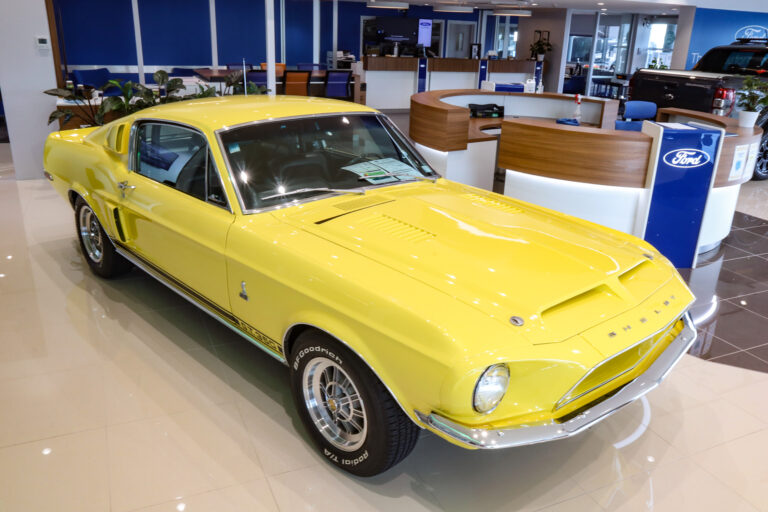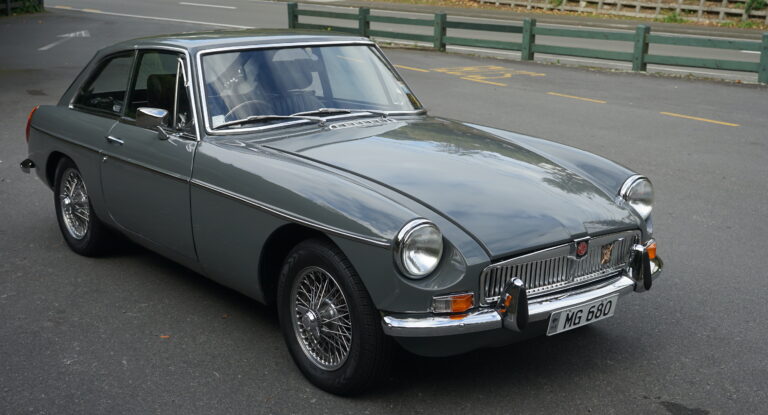data-animation-override>
“Since the Tasman Championship started, Kiwi drivers have dominated the series, and an Australian had never won overall honours. That changed in 1975”
To say that Jim Murdoch adapted well to the power of Formula 5000 is something of an understatement. He went from the Begg JM1 Formula Ford to the final car to come out of George’s famed ‘Toyshop’ in Drummond with seamless ease. The increase in power was close to fivefold, but Jim had wings-and-slicks experience from when he’d run Formula Atlantic in the UK. As he explained, “It was about the same cost as doing Formula Ford.” The JM1 (so named because George Begg recognized Jim’s part in the car’s design and construction) took Murdoch to runner-up in the New Zealand championship, the car running in orange livery that broke with Begg’s traditional ‘farm machinery yellow’.
Jim explained the reason behind that colour change, “I don’t like yellow so I convinced George we should do it McLaren orange.”

Photo: Terry Marshall
That was an easy sell, but for the 18th and final Begg — the 018 — there was a concession. The main part of the body would be royal blue, but with ‘Begg yellow’ wings. The finished product looked much more arrow-like than did the previous bulbous Begg FM5.
After a difficult introduction in the Gold Star rounds in late 1974, the new combo wasn’t given much hope in the Tasman Championship that kicked off at Levin over the first weekend of January. Jim struggled through to bring the poor-handling car home in sixth.
A week later at Pukekohe for the Grand Prix and, after an inspired decision by George to start on rain tyres, a forceful Murdoch went from sixth on the grid to second by the end of the first lap. Australian Warwick Brown controlled the race out front, but despite a spin, Jim kept hard at it. Big names dropped by the wayside as the Begg ploughed on, with Murdoch having the race of his life to bring the Begg home in runner-up spot.
So, was George over the moon, or ready to scold his driver for not winning? “He was pretty chuffed,” recalls the driver 40 years later. To put icing on the cake, Jim was presented with the Bruce McLaren Memorial Trophy for the first Kiwi home by Bruce’s dad, Les — that link being particularly strong given that George had worked at McLaren in 1968, and Jim after that.
Across the ditch

Photo: Terry Marshall
The points then dried up for the Begg équipe at Wigram and Teretonga, but the campaign in Australia went from bad to worse as the car was withdrawn due to a tired engine at Oran Park, while Adelaide presented cooling issues that hadn’t been apparent in New Zealand.
The forgettable sortie was capped off by a damaged car at Sandown in the series finale. The other Kiwis in that race were Graeme Lawrence, Chris Amon and Kenny Smith — and for the former, it was a championship showdown. The Hamiltonian went into the final race with 30 points from wins at Levin and Adelaide, while, remarkably, also on 30 points were Australian-mounted Aussies Brown and Johnnie Walker. In addition to winning at Pukekohe, Brown had won at Oran Park. Walker, meanwhile, had won at Surfers and then finished either third or fourth in every other race. The remaining rounds had been won by Graham McRae (Wigram) and Amon (Teretonga).

Photo: Terry Marshall
For Lawrence it was a case of getting back to where he’d been prior to the enormous accident in the Grand Prix at Pukekohe in 1972. That crash had destroyed his Lola T300, and nearly destroyed him. He’d returned with an F2 Surtees before getting the newer T332 in time for the 1974 series. Although he was competitive, it wasn’t until 1975 that it all started coming together again, as he recalls 40 years on, “I was very comfortable with the car — and very comfortable with myself.” He recalls winning the 1975 series opener at Levin where he’d had a good battle with Brown — the Sydneysider probably the favourite to take the title from the outset, and ultimately he’d “won the race fairly early on. But it was a grouse battle for a while — we both stopped for more fuel and pretty much ran at the front the whole time.”
By the end of the four races in New Zealand the points table showed Brown and Lawrence both on 15 points, Walker with 13, while Amon and McRae both had nine each from their respective wins. Then the three title contenders won the next three races in succession, meaning that they each had identical points after seven of the eight rounds.
Satisfying victory
For Lawrence, the win at Adelaide was enjoyable because he had Brown and Walker on his tail, “It’s hard to say which was the more satisfying victory. Warwick was a hard charger — but a good, clean driver.” As for Walker, Graeme recalls him as “very good — a bit steadier than WB.”
Like Lawrence and Brown, Walker was running a Lola T332 — but uniquely he had forsaken the ubiquitous Chevrolet for the Repco Holden. The South Australian, however, put himself out of contention right at the start, and GL remembers the crash vividly — “Oh it was a big one, alright.”
So, now the championship was down to just the Kiwi and the Aussie.
Since the Tasman Championship had started, an Australian had never won it — Graeme had famously beaten all the V8s in the first year of F5000 in the ex-Amon Ferrari Dino. But that was five years earlier, and he’d been through a lot since. In the race, both Brown and Lawrence had problems — with Graeme’s putting him out with nine laps to go — but the Australian ploughed on to finish sixth, good enough for the final point, and to snatch the title from under the Kiwi’s nose.
That series also saw Kenny Smith finally shake the ‘small car’ driver tag, as he became increasingly comfortable with the 5.0-litre V8-powered cars, and he steered his Lola T332 to a runner-up finish at Surfers. It would seem the transition proved successful, as four decades on he’s still hard at it.
Photos: Terry Marshall


